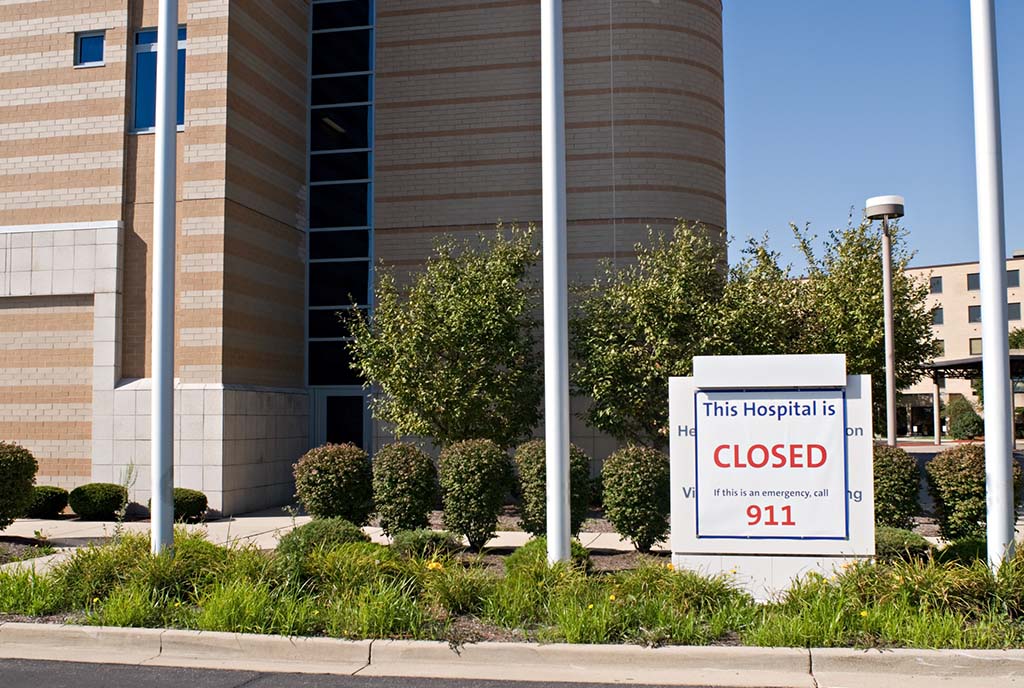
The immigrant women would take a boat from their home countries to New York and the rail to Illinois. A few would follow the river to Iowa. Still more would tackle the Mississippi River, making their home in the Twin Cities of Saint Paul and Minneapolis, MN. A handful made their final destination the Big Woods of what would later be named Wisconsin. Yet these women were different from other immigrants who disembarked.
While they were often fleeing oppression in their home countries, they were not in a rush to meet their families; they often did not have husbands, nor were they looking for them. They weren’t planning to stop in one of the nation’s hub cities or try their luck in one of the small farming communities.
These were the women who would go on to found the majority of the nonprofit health systems we have today. Underrecognized in the general histories of the nation, even if they are remembered in the communities they helped build, they were involved in the founding of Mercy Health and Mayo Clinic, among many others. They were often but not exclusively Catholic. They were often but not exclusively nuns.
In western Wisconsin, the Hospital Sisters of St. Francis would go on to weave a web of care that eventually extended far beyond their region. The hospitals they ran are emblematic of the great work and importance of nonprofit hospitals—and also a warning about how fragile these hospitals have become and how swiftly the networks of care they built can be snatched away.
This is the story of St. Joseph and Sacred Heart Hospitals. It is also a story about the loss of rural healthcare in the United States: the great unraveling of a network of care thousands of people—mostly women—built to sustain America.
What Nonprofit Hospitals Mean in Rural Areas
In western Wisconsin’s Chippewa Valley, the medical system began as a response to a need. A priest and a small group of women began raising funds in 1884 for a hospital in the Big Woods. They raised a total of $800 from the community—roughly $26,000 in today’s money—and set about renovating a property that would become St. Joseph’s Hospital in the town of Chippewa Falls. The hospital would officially open a year later after the arrival of four of the Hospital Sisters of St. Francis.
In the long tradition of unpaid care workers, the Sisters who ran the hospital did not originally take money but rather operated an alternative economy, where they were paid largely through food or skilled labor. They maintained their own gardens and did much of the less glamorous work of the hospital, like laundry, themselves. Later they and their fellow Sisters at Sacred Heart would establish an insurance system whereby a one-time yearly payment would allow for treatment at any of the hospitals run by the Hospital Sisters. This early insurance cost $7.50 a year ($244.07 today).
Many people who did not have insurance still sought care—and over the years, some found their bills forgiven. This allowance of the uninsured and forgiveness of medical debt continues to be a hallmark of many nonprofit hospitals.
Even as the health systems in the United States changed, the community remained involved.
Another feature of nonprofit hospitals that both St. Joseph’s and its sister hospital Sacred Heart in Eau Claire, WI, exemplified: they are deeply intertwined with their communities.
For St. Joseph’s and Sacred Heart, this meant nurturing the side projects of many of the nuns and others who worked at the hospital. This included projects like x-ray technician Sister Appolonia’s closet for those who needed clothing in Eau Claire, or the community garden on the grounds of St. Joseph’s in Chippewa Falls. It also included bigger ventures into income-based housing for the elderly.
Other projects would end up incorporated within the hospitals and Hospital Sisters Health System (HSHS) more directly, like the many alcohol and other drug abuse (AODA) treatment facilities and small local clinics that spread into more rural areas of Wisconsin. For many years, the hospitals also included home health and hospice services that allowed patients to live and die at home.
Nonprofit hospitals also allow communities to become involved with their own care. The nuns who were the original care workers at St. Joseph’s and Sacred Heart were there because the community needed hospitals, and the community often provided the funds to buy, build, and staff them. Even as the health systems in the United States changed, the community remained involved through donations and large purchases like Sacred Heart’s Mobile Mammogram Bus, which was acquired via donation, and travels throughout western Wisconsin.
This bond between the community and healthcare providers continued to be important even as the nuns began to withdraw from leadership positions at HSHS in the 1960s. (though they were still involved on the ground in many hospitals).
The 1970s saw the creation of St. Francis Food Pantry in Eau Claire, originally operated by two nuns from Sacred Heart Hospital’s garage. The food pantry, which has since separated from the hospital, continues to distribute between 20,000 to 30,000 pounds of food each week. Meanwhile, in Chippewa Falls, the original St. Joseph’s Hospital was transformed into low-income apartments to meet housing needs.
The 1980s saw the continuation events like the annual charity ball held at St. Joseph’s and the 1990s saw the hospitals take a stand for local food at the same time western Wisconsin was losing 40 percent of their dairy farmers. Noting that “local food is good medicine” this initiative helped support farmers in 11 counties.
In these and other ways, the hospitals and their offshoots continued to be a vital part of their communities into the 2000s and through the start of the COVID-19 pandemic.
Sudden Closures
That all changed in January 2024 when HSHS headquarters in Illinois announced that not only would it be closing Sacred Heart and St. Joseph’s Hospitals, but the entire system would be withdrawing from western Wisconsin by the end of March. Only three months later, the hospitals and many of their affiliate treatment centers and clinics were closed.
There was no longer a trauma hospital in all of western Wisconsin.
The shock was severe, the loss sudden. More than 1,400 people were left unemployed. Those struggling with addiction or dealing with cancer and rare diseases were forced to travel three to five hours to urban areas for treatment. Those who could not or would not travel due to ill health or lack of funds were left without care.
Sign up for our free newsletters
Subscribe to NPQ's newsletters to have our top stories delivered directly to your inbox.
By signing up, you agree to our privacy policy and terms of use, and to receive messages from NPQ and our partners.
In Chippewa Falls, where the HSHS system began, there was now no hospital. The city had no morgue, as that facility had been in the hospital. And there was no longer a trauma hospital in all of western Wisconsin.
The reason for the sudden withdrawal? HSHS argued that the hospitals and their affiliated clinics and centers were overwhelmed with “financial stress from the pandemic, inflation, workforce constraints, local market challenges and other industry-wide trends” as local news outlet WEAU reported.
The financial constraints are very real. According to the American Hospital Association, over half the nation’s hospitals were in the red at the end of 2022. The following year saw some improvement, but inflation, high labor costs due to worker shortages, supply chain issues, and lags in reimbursement from insurance companies or government programs have continued to compound the pandemic effect.
These trials are impacting all hospitals—but they may be especially devastating for nonprofit hospitals, which made up over 60 percent of all rural hospitals in 2023. These hospitals are not only larger than their for-profit competitors, they also tend to focus on important but less profitable services like trauma wards and home healthcare.
Rural areas often struggle find and maintain staff based on their remote location. Then there is the nonprofit mandate to provide care regardless of insurance. This means not only do nonprofit hospitals offer care to those who are underinsured, they also have higher rates of patients on Medicare and Medicaid: federal programs notorious for their lags in reimbursement or gaps in coverage. Meanwhile, the common “deny and delay” policy of many private insurers hurts those they insure—and their hospitals.
More Barriers to Care
All these factors have had hard impacts on rural healthcare. Almost half of rural hospitals are operating in the red, and 30 percent of all rural facilities in the United States are at risk of closing, according to an analysis by the Center for Healthcare Quality and Payment Reform. This list of closed or threatened hospitals does not include hospitals like Sacred Heart that would not ordinarily fall into this “immediate risk of closure” but are yoked to another struggling hospital like St. Joseph’s or a provider like HSHS.
More long-distance trips may also be needed as the pandemic-era provision that required virtual appointments to be covered by insurance is currently set to expire in 2025.
The domino effect of rural health deserts results in poorer health outcomes and higher medical costs. Then there is the harm done by such sudden withdrawals like that in western Wisconsin when people battling addiction and disease are suddenly discharged from their providers and forced to search for new doctors. That is, of course, for those who are able to navigate the travel involved in finding care.
People living on lower incomes, those most likely to be on Medicare or Medicaid, may face barriers to travel due to financial concerns and ill health. Meanwhile state-based insurance programs like Wisconsin’s otherwise laudable BadgerCare Plus are unable to cover care across state lines. Thus, those who no longer have access to a local clinic in Wisconsin are also unable to use a clinic a half-hour away in neighboring Minnesota. Instead, they need to drive three hours to Madison or five hours to Milwaukee—a difficult undertaking for those dealing with serious illnesses.
More long-distance trips may also be needed as the pandemic-era provision that required virtual appointments to be covered by insurance is currently set to expire in 2025.
These issues are not unique to Wisconsin. Indiana has urged its residents to make telehealth appointments—but Medicaid will no longer cover video and phone visits for certain patients there.
These issues also cross the political divide in Wisconsin with both Republican and Democratic representatives putting forward bills to combat some of the concerns. In 2024, Republican Representative Derrick Van Orden fielded a bill to make telehealth options for rural populations permanent. Across the aisle, Democratic Senator Tammy Baldwin put forward a bill that would prevent health systems from unannounced closures like what happened with HSHS. Both bills went to committee.
In the meantime, the newly formed Chippewa Valley Health Cooperative aims to purchase St. Joseph’s Hospital in Chippewa Falls from HSHS—a move that suggests that if communities are given sufficient resources and advance warning, at least some of the harms impacting rural hospitals can be mitigated.
The author would like to thank the Chippewa Genealogical Society, the Chippewa Historical Association, and the Order of The Hospital Sisters of St. Francis among many others. Your work is a reminder that we are not the first nor are we alone in the challenges we face in the present day.
For More on This Topic:
How the Mental Health of Rural Americans Is Shaped by Climate Change
Anchor Institution Strategies in Hospitals: Reflections on the Past Two Decades
How Do Nonprofit and For-Profit Hospitals Differ? It’s Complicated
Closing Care Gaps: Physician Shortages, Medical Deserts, and Health Disparities










